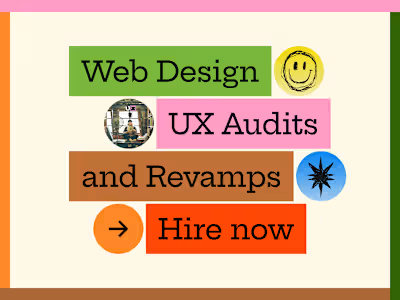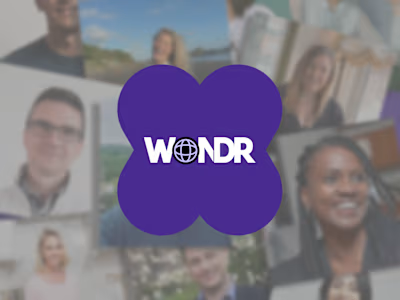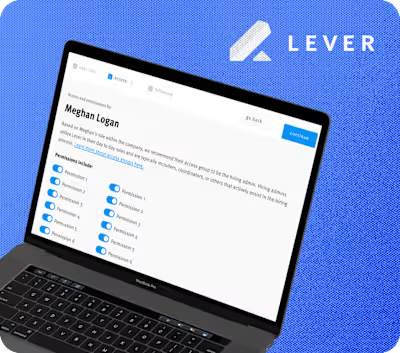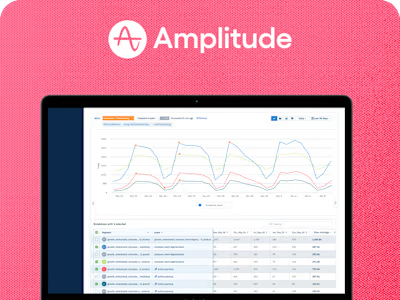Accelerating Developer Activation: Reducing Onboarding Drop-Off…
Overview and outcomes
Apollo is a leader in GraphQL tooling and the creator of GraphOS, a platform for building, managing, and scaling GraphQL APIs. When I joined, only 8% of users moved past the initial onboarding screen, and conversions hovered at 0.1%. My goal was to turn this around by delivering an onboarding experience that educated, activated, and supported developers at every stage of their journey.
Initial onboarding data revealed that >50% of new users lacked an API endpoint and were just exploring GraphQL. We needed to understand user intent to shape future onboarding experiences. After V1 launched, we moved into V2. With growing demand for enterprise features, the sales-led model couldn't scale. Developers wanted to self-evaluate GraphOS without talking to sales, but had no way to explore premium features on their own. Despite improvements, most users still dropped off due to a lack of immediate value. Requiring an endpoint to get started was a blocker. The need for contextual guidance, progressive disclosure, and early value surfaced repeatedly. These insights are what led to our V3, referred to as "Unified Onboarding."
Role and scope
As the lead product designer on this multi-phase initiative, I owned end-to-end design strategy across Apollo’s onboarding and adoption experiences. Over two years, I partnered cross-functionally with product, engineering, marketing, and developer experience teams to ship scalable, high-impact improvements—from early user segmentation and self-serve trials to a fully unified onboarding system. My work spanned user research, information architecture, feature integration, and conversion optimization, directly contributing to a 300% increase in enterprise trial signups and a 55% boost in user engagement.
Key outcomes
45% drop-off reduction in onboarding flow
Engagement rose from 8% to 55%
Enterprise trial signups grew from <1% to 4% weekly
Product demo accounted for 30% of all onboardings
User research base grew from 0 to 1,000+ in the first 3 months of launching our opt-in
Why this mattered
Apollo’s onboarding experience was rigid and one-size-fits-all. Regardless of background or intention, every user was funneled into a flow requiring an API endpoint, excluding over 60% of incoming users who lacked one. Drop-off was massive, and there was no clear ownership around resolving this friction.
Our goals were to
Reduce onboarding drop-off and increase engagement
Support non-GraphQL users and technical evaluators
Enable product-led enterprise trials
Increase quality leads and proof-of-concept completions
Improve enterprise adoption without reliance on sales
What I did
Across all three onboarding phases, I led product design strategy—from problem definition and ideation through launch and iteration—collaborating cross-functionally with product, engineering, marketing, and developer experience stakeholders.
Onboarding Survey (V1)
Designed and shipped a multi-step onboarding survey that segmented users by role, intent, and experience level—laying the foundation for future personalization.
Identified friction in early user journeys by leading exploratory research on new signups and their goals.
Synthesized 13k responses to identify patterns (e.g. over 50% of users didn’t have a graph) and created user segments.
Collaborated with developer experience (DX) teams to prioritize and scope a product demo based on high user demand for "learning-first" pathways.
Partnered with marketing to update onboarding emails and education flows using insights from survey data.
Influenced the prioritization of a GraphQL product demo based on insights from the survey.
Self-Serve Enterprise Trial + Brand Refresh (V2)
Simplified plan selection in onboarding to align users with the right tier based on needs and intent.
Redesigned the org creation experience to support product-led trials for enterprise tiers.
Created a research opt-in path during onboarding that grew Apollo’s UXR research pool from 0 to 1,000+ users in 3 months.
Partnered with sales to ensure product-led trial flows aligned with pipeline goals and enterprise buyer behavior.
Unified Onboarding Parts 1 & 2 (V3)
Led design for a fully reimagined onboarding experience, introducing contextual guidance, new IA, and a modular landing experience based on persona needs.
Integrated multiple Apollo services (e.g., Odyssey tutorials, demo graph, REST connectors) directly into onboarding, increasing self-serve activation.
Worked closely with engineering to design and QA feature rollout for paid-tier trial pathways and brand system updates.
Used Amplitude to define success metrics and evaluate onboarding engagement and drop-off rates—improving activation from 8% to 55%.
Research insights
To understand the barriers to adoption and activation, we combined qualitative interviews with developers, unmoderated user testing, and behavioral analytics via Amplitude. Our research spanned both first-time and returning GraphQL users, as well as internal interviews with sales, support, and developer experience teams. Key insights included:
Majority of users lacked graphs or production-ready data: Over 50% of new signups had no graph to connect—yet our onboarding initially required one. This revealed a significant intent mismatch and led to the creation of education-driven flows like the Spotify product demo.
"Aha" moments were missing for new users: Developers unfamiliar with Apollo struggled to understand how to reach value. This insight fueled a series of onboarding changes designed to reduce friction, clarify benefits, and surface key features earlier.
High friction from unfamiliar concepts: Terms like supergraph, router, and containers introduced unnecessary complexity for new users. We addressed this with more intuitive copy, contextual tooltips, and restructured flows that gradually layered in complexity.
In-product discoverability issues: Even experienced users failed to find power features like schema contracts without a sales walkthrough. This showed us the IA and in-product visibility of our core offerings were limiting self-serve growth and needed to be restructured.
Misaligned plan selection during sign-up: Enterprise-ready users were mistakenly starting on Cloud due to lack of clarity around tiers. This insight helped prioritize onboarding paths that aligned user needs with the right product tier early.
Strong interest in continued learning: Many developers were entering the product to build skills—not just ship features. This influenced our decision to embed direct pathways to Apollo Odyssey, our tutorial and certification tool, from onboarding.
What we shipped
Onboarding Survey (V1)
3-step onboarding survey to capture user goals, experience level, and intended use
First segmentation of users based on motivations
Introduced light personalization to onboarding emails
Self-Serve Enterprise Trial + Brand Refresh (V2)
Redesigned org creation flow with pricing tier selector
Self-serve path to begin a 30-day enterprise trial
Opt-in user research data collection
Updated product visuals and tone
Unified Onboarding Parts 1 & 2 (V3)
New UI framework with progressive onboarding paths
Sidebar redesign replacing top navigation
Direct pathways to product demo, REST backdoor, boilerplates, Odyssey
Educational tooltips and improved language
Added CTA to select a Dedicated (paid) tier during onboarding
Introduced visual language updates aligned with new brand
Created navigation parity between enterprise and free-tier experiences
Phase learnings and outcomes
Onboarding Survey (V1)
Learnings
50% of users had no graph
70% were using Apollo for personal learning
24% of those wanting to query an endpoint were focused on skill-building
Users lacked foundational context to continue with onboarding
Outcomes
Guided future onboarding strategy and surfaced need for a no-code product demo
Informed marketing and DevRel updates to content and email flows
Sparked development of the Spotify demo, now used in 30% of onboards
Self-Serve Enterprise Trial + Brand Refresh (V2)
Learnings
Self-serve enterprise users had 8% higher success rates than free tier
Trials became one of the strongest lead gen drivers for Sales
Teams evaluating GraphOS expected to build a proof of concept within onboarding
Outcomes
300% increase in enterprise trial signups (now 50% of all sales leads)
Weekly trial signups grew from <1% to 4%
Research opt-in base expanded from 0 to 1,000+ within 3 months
Unified Onboarding Parts 1+2 (V3)
Learnings
Clearer paths increased interaction with neglected product levers (e.g., Odyssey)
Developers responded positively to tier-specific guidance
Unified onboarding validated adoption as a key investment area
Outcomes
45% drop-off reduction post-launch
Engagement rose from 8% to 55%
Triggered 2024 roadmap adoption initiatives and team formation
Like this project
Posted Jun 25, 2025
Boosting developer activation at Apollo through a redesigned onboarding experience, driving a 55% engagement lift and 3x more enterprise trial signups.
Likes
0
Views
3
Clients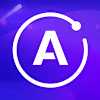

Apollo GraphQL




